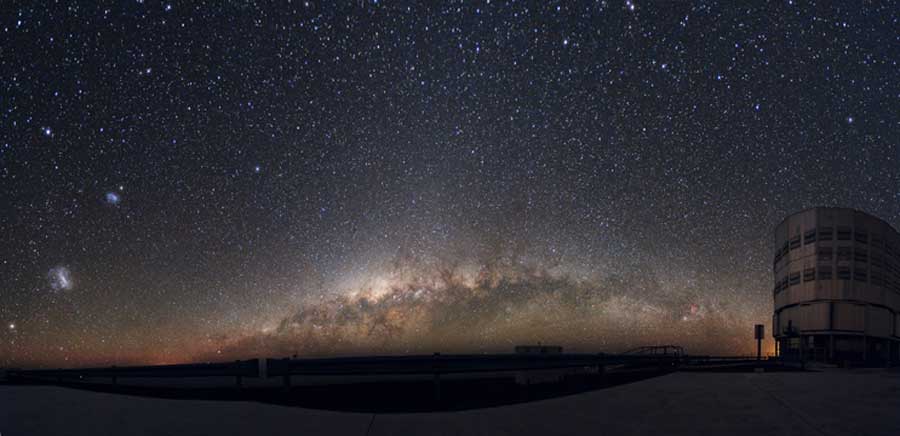Astronomers have been monitoring the LMC to hunt for evidence of massive compact halo objects (MACHOs). MACHOs were thought to be faint objects, roughly the mass of a star, but their exact nature was unknown. Several surveys looked for MACHOs in order to find out if they could be a major component of dark matter — the unseen stuff that holds galaxies together.
In order for MACHOs to make up dark matter, they must be so faint that they can’t be directly detected. Instead, astronomers looked for a phenomenon known as microlensing. During a microlensing event, a nearby object passes in front of a more distant star. The gravity of the closer object bends light from the star like a lens, magnifying it and causing it to brighten.
By studying the LMC, astronomers hoped to see MACHOs within the Milky Way lensing distant LMC stars. The number of microlensing events observed by various teams was smaller than needed to account for dark matter, but much higher than expected from the known population of stars in the Milky Way. This left the origin of the observed events a puzzle and the existence of MACHOs as exotic objects a possibility.
“We originally set out to understand the evolution of the interacting LMC and SMC galaxies,” said Gurtina Besla of Columbia University in New York. “We were surprised that, in addition, we could rule out the idea that dark matter is contained in MACHOs.”
“Instead of MACHOs, a trail of stars removed from the SMC is responsible for the microlensing events,” said Avi Loeb of the Harvard-Smithsonian Center for Astrophysics in Cambridge, Massachusetts. “You could say we discovered a crime of galactic proportions.”
Computer simulations showed that the most likely explanation for the observed microlensing events was an unseen population of stars removed by the LMC from its companion, the SMC. Foreground stars in the LMC are gravitationally lensing the trail of removed stars located behind the LMC from our point of view.
Only a fast-moving population of stars could yield the observed rate and durations of the microlensing events. The best way to get such a stellar population is a galactic collision, which appears to have occurred in the LMC-SMC system.
“By reconstructing the scene, we found that the LMC and SMC collided violently hundreds of millions of years ago. That’s when the LMC stripped out the lensed stars,” said Loeb.
Their research also supports recent findings suggesting that both Magellanic Clouds are on their first pass by the Milky Way.
Although the evidence for the trail of lensed stars is persuasive, they haven’t been directly observed yet. A number of teams are searching for the signatures of these stars within a bridge of gas that connects the Magellanic Clouds










